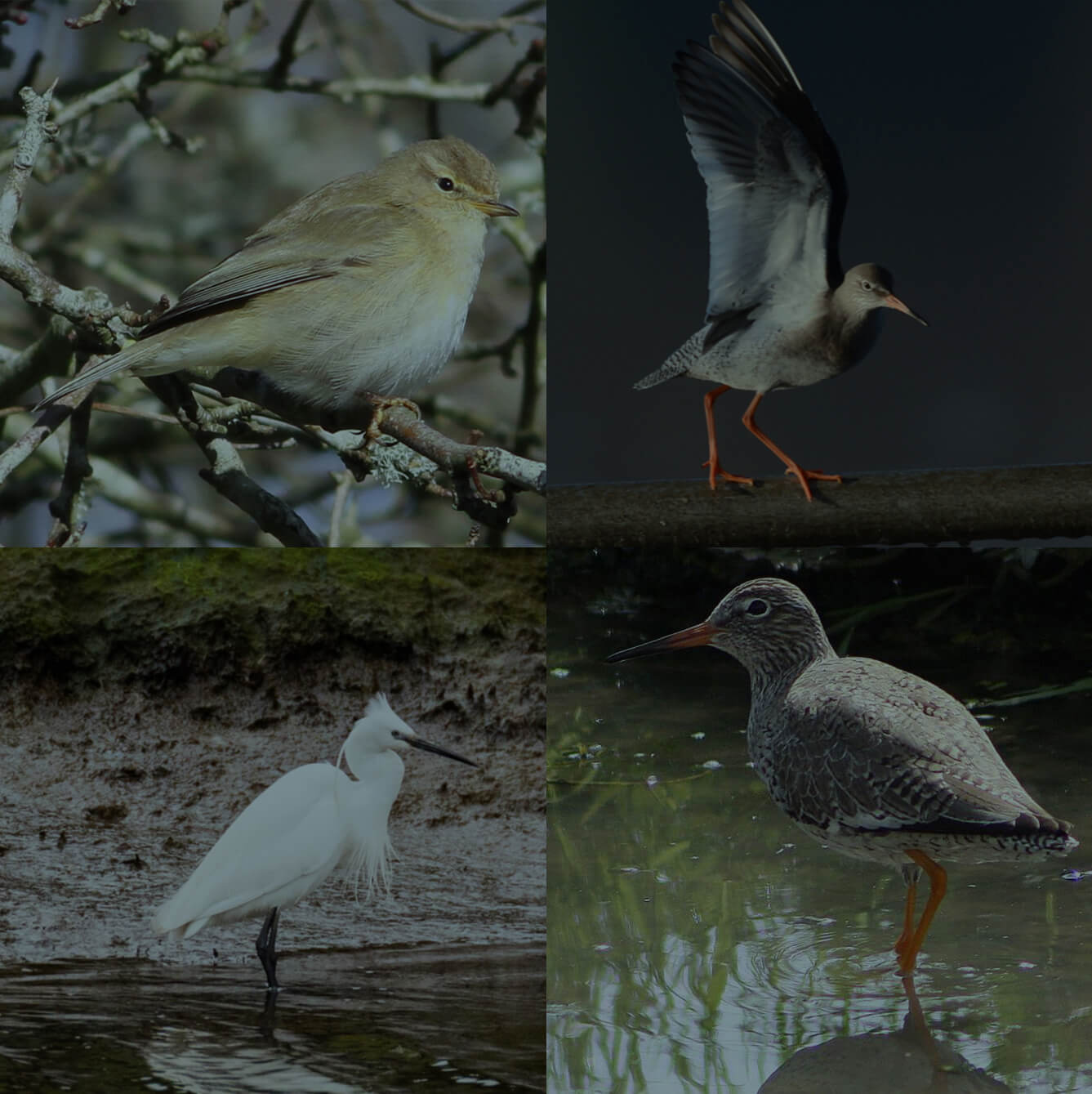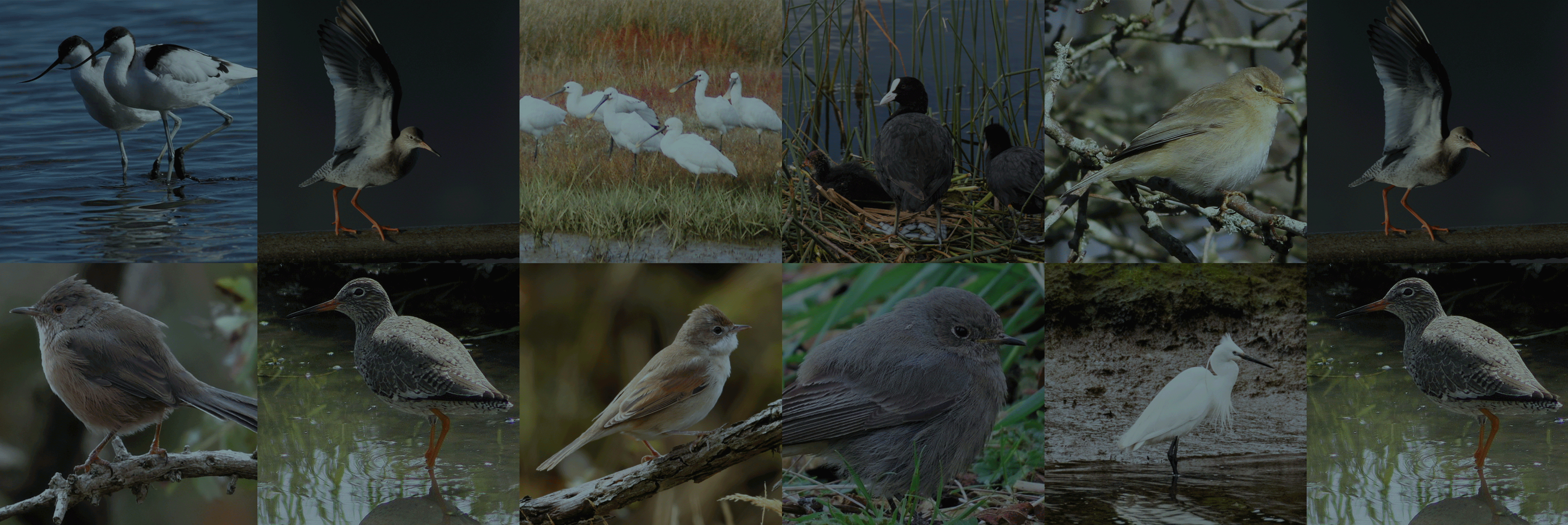An official account of all species that have been recorded and reported by birdwatchers and naturalists in the Poole Harbour area since records began.
The data for this list has been extracted from various sources, but George Greens 'The Birds of Dorset', Mansel-Pleydell's Birds of Dorsetshire, Naylor’s reference manual of rare birds and the back catalogue of Dorset bird reports have provided most information. Data is currently still being researched and records will be updated accordingly.
You can view this information in two different ways. Our alphabetical list provides information on the status of each species within the harbour, finder dates and names, photos and favoured locations. By clicking on the Systematic List button you will be presented the full Poole Harbour systematic list which includes status of species, pending records and historical accounts.
To date, 333 species have occurred and have been accepted within the Birds of Poole Harbour boundaries. A further 11 distinct subspecies have also been seen. In addition, we have two species/subspecies which have been recorded, but are awaiting acceptance by the appropriate records panel.
There are a handful of historical records, for which there is currently insufficient information to allow their inclusion onto the Poole Harbour list, but are believed to be genuine records. They are listed at the end of the list.
Finally, there are a number of feral or escaped species that have been recorded within the Birds of Poole Harbour boundaries. They are included for completeness, but are not included on the Poole Harbour list.
We would be interested in hearing details of any species that do not appeared on this list.
The Birds of Poole Harbour systematic list is a PDF which you can view by clicking on the button below. It was last updated on December 2019.
Full Poole Harbour Systematic List
Alpine Swift
Latin Name
Apus melba
Status
Vagrant
Site And Records Information
With only 6 Poole Harbour records, none of which were twitchable, a long stayer would be widely appreciated.
1 on 29th May 1950 at Wareham (BB47;354)
1 on 1st May 1987 at Godlingston Heath, Studland (I.M. Lewis, J.A. Lewis, S.J. Morrison)
1 on 26th Apr 1992 Over Branksome Chine (J.H. Blackburn)
1 on 31st Mar 2002 at Studland (N. Hopper)
1 on 5th Mar 2003 over Alington Rd, Poole (P. Robinson)
1 on May 26th 2022 over Old Harry, feeding along the cliff edge, often giving views down to 1m (Kevin)
American Golden Plover
Latin Name
Pluvialis dominica
Status
Vagrant
Site And Records Information
An incredibly exciting find by a visitor to the area who saw this first for Poole Harbour four days in a row without knowing how special it was. Photos of the bird were sent to Birds of Poole Harbour on the fourth day when it had sadly then disappeared never to be seen again. It was later identified by Killian Mullarney.
Brand’s Bay 1 present at Redhorn Point from 19th-22nd Jun 2018. (D Derrick, C Robinson per BoPH). In one of the more extraordinary rarity occurrences of the year, this bird was identified only from a photo sent on 23rd June to Birds of Poole Harbour by the observers, who could not put a name to it.
American Herring Gull
Latin Name
Larus smithsonianus
Status
Vagrant
Site And Records Information
At the time of its discovery American Herring Gull was treated as a race of Herring Gull rather than a full species in its own right. Interest in this bird was high and it was widely twitched. However, there are some who wish that they had put more effort into seeing it at Lytchett Bay on what was presumably its nightly commute to roost in the Wareham Channel!
1 from 4th Mar-6th May 2002 at Corfe Mullen tip (J. Lidster et al.)
1 on 18th Mar 2002 at Lytchett Bay (D. Fairhurst) (same as above)
American Robin
Latin Name
Turdus migratorius
Status
Vagrant
Site And Records Information
1 on 15th-16th Jan 1966 in Brands Bay (T. Haysom et al.). It was then relocated in a Canford Cliffs garden, Poole, from 18th Jan-10th Mar 1966 (M. Crosby et al.).
American Wigeon
Latin Name
Anas americana
Status
Vagrant
Site And Records Information
Considered an escape until recently a lovely male was on Brownsea from 2nd to 5th May 1987 and was first seen in Christchurch Harbour. However, it has never been submitted, neither has another record from Arne between 4th November to 4th December 1990. There have been 13 Dorset records involving c11 individuals. That said there have been none since the 5th Dec 2000 at Abbotsbury. This contrasts with the British status of this species which is described as stable, averaging c15 per annum over the last 25 years. Surely one to look for. Is Holes Bay the most likely location given the large flocks of Eurasian Wigeon which congregate there to feed on the algal matts? Of the 13 birds recorded in the county statistically we should get two or three!
Aquatic Warbler
Latin Name
Acrocephalus paludicola
Status
Scarce Passage Migrant
Site And Records Information
This RED Listed species breeds in Eastern Europe. Its regular migration pattern takes a route west through the low countries, through France to the Atlantic coast, where it turns south. It then continues to its wintering grounds in West Africa. When weather systems are suitable small numbers of birds are drifted to the UK, mainly along the south coast.
There is considerable conjecture as to why numbers of birds in Dorset (and indeed Great Britain) have declined so much since 1997. There is no doubt that the decline is real and not due to a change in effort by ringers. Ringing data from sites in France is not reflecting the decline in the UK. Whilst numbers recorded each year do vary (no doubt due to weather conditions and ringing effort) numbers have remained broadly stable between 1998 and 2007. In 2009 and 2010 concerted effort in a single study covering 44 ringing sites produced ringing totals of 874 and 636 birds respectively. Applying statistical methods it was demonstrated that the number birds passing through France on autumn migration was between 24,000 and 30,000. One potential reason therefore for the decline in British records is that the light south-easterly winds in August needed to bring them here are now occurring much less frequently. Bird ringing at Lytchett Bay has shown that when the weather is right this species does still occur with some regularity.
Aquatic Warbler prefers damp rush and sedge beds. It is a hard bird to find “in the field” and as a consequence many are only recorded when they are mist netted for the purpose of ringing. Ringing activity was intense at Keysworth from 1991 to 2000. An average of 11 birds were ringed per year. Once this activity ended the focus shifted to Lytchett Bay. The coverage here is much less intensive and less frequent.
All Poole Harbour records:
1 on 26th Jul 1976 at Brownsea
1 on 22nd Aug 1983 at Lytchett Bay (trapped) (I.M.Lewis)
1991 – 21 trapped at Keysworth between 17th Aug and 10th Sep. (Stour Ringing Group)
1992 – 12 trapped at Keysworth between 7th and 14th Aug. Inc 4 on 14th. 1 additional bird on 18th Sep (Stour Ringing Group)
1993 – 7 trapped at Keysworth between 10th Aug and 6th Sep. (Stour Ringing Group)
1994 – 17 trapped at Keysworth between 2nd Aug and 5th Sep. (Stour Ringing Group)
1995 – 5 trapped at Keysworth between 6th Aug and 21st Aug. (Stour Ringing Group)
1996 – 4 trapped at Keysworth between 8th Aug and 15th Aug. Coverage much reduced cp earlier years (Stour Ringing Group)
1997 – 11 trapped at Keysworth between 10th Aug and 20th Aug. Inc 3 on 11th. (Stour Ringing Group)
2000 – 4 trapped at Keysworth between 5th Aug and 10th Aug. Inc 3 on 5th. (Stour Ringing Group)
1 on 31st Aug 2002 at Keysworth (H.Wood-Homer)
1 “in September” 2003 at The Moors, Ridge (M.Slater)
1 singing on 16th Aug 2005 at Lytchett Bay (R.Gifford, S.Robson)
1 on 20th Aug 2011 at Lytchett Bay (trapped) (T.Elborn, S.Robson et al.)
2 on 18th Aug 2012 at Lytchett Bay (trapped) (S.Breeze, R.Gifford, S.Robson et al.)
1 on 25th Jul 2014 at Lytchett Bay (trapped) (K.E.Lane, S.Robson et al.). This adult was the earliest ever in Dorset.
1 on 31st Aug – 1st Sep 2016 at Lytchett Bay. Photographed in the field (I.Ballam et al.)
1 on 12th Aug 2020 at Lytchett Fields RSPB An adult female with a brood patch ringed (Shaun Robson et al, trapped) was subsequently re-trapped 16 days later in northern Spain, a movement of 983km.
1 on 17th August 2021 at Lytchett Fields RSPB. A juvenile was trapped and ringed during a fixed westerly weather system (S.Robson & J.Parker). There were really no favourable weather conditions during the whole of August and to the best of our knowledge this was the only UK record this year!
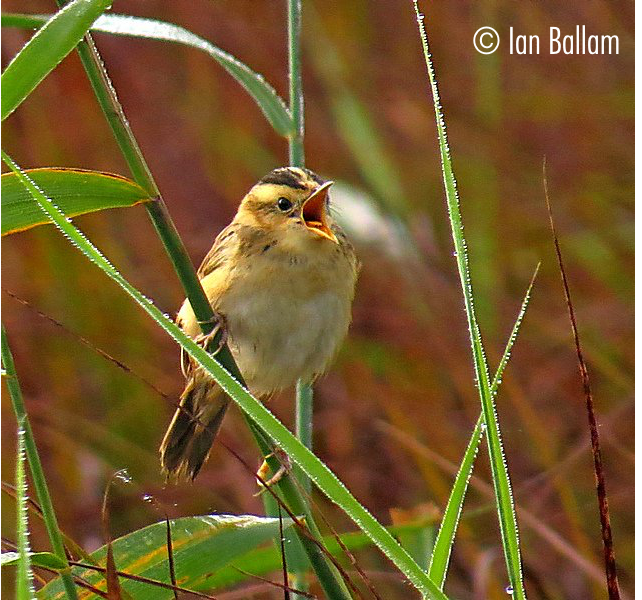
Arctic Redpoll
Latin Name
Carduelis hornemanni
Status
Vagrant
Site And Records Information
The only Poole Harbour records were accepted as two different birds and occurred as part of a massive eruption which brought more than 230 to Great Britain. They were of the race C. h. exilipes, now known as Coues’s Arctic Redpoll.
1 on 20th February 1996 at Studland Heath (Steve Morrison)
1 on 24th – 26th Mar 1996 at Studland Heath (Mark Constantine et al.)
Arctic Skua
Latin Name
Stercorarius parasiticus
Status
Passage Migrant
Site And Records Information
The most common of the four Skuas with ones and twos seen in spring, summer or autumn in Poole Bay, off Branksome, or in Studland Bay. Five have been recorded in a single day on a small number occasions. The earliest sighting of the year has been on 4th March twice, but most passage is from mid-April onwards. The best way to see Arctic Skua is to be at Branksome Chine between eight and ten on a spring or autumn morning with force five to six on-shore SSE winds and scan. Birds are normally migrating but sometimes they will sit on the water, in between bouts of harassing gulls or terns for food. There are a number of sightings from inside the harbour including from Brownsea, Middlebere, Lytchett Bay and over the RSPB Arne car park!
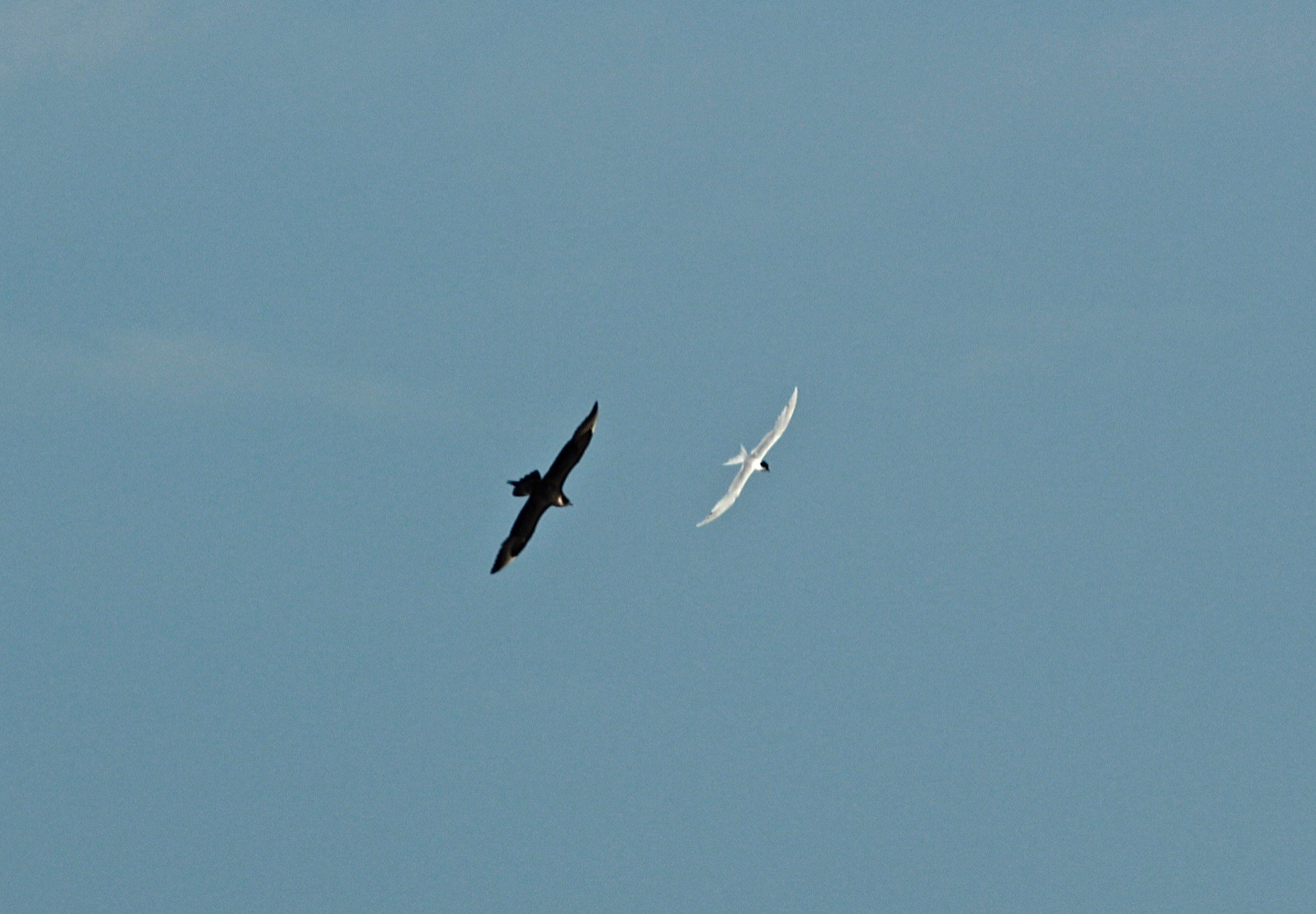
Arctic Tern
Latin Name
Sterna paradisaea
Status
Passage Migrant
Site And Records Information
Majority of reports relate to 1st year birds heading west in the autumn out in Poole Bay from Branksome Chine.They do get recorded inside the harbour, mainly on the Brownsea lagoon but also at Swineham GP, central harbour and Studland Bay.
Avocet
Latin Name
Recurvirostra avosetta
Status
Winter Visitor and potential new breeder
Site And Records Information
A great success story with numbers rising from 25 to almost 2000 in just 30 years. These numbers exceed the threshold for international importance, (700) and the harbour is now one of the most important British wintering sites with over 40% of the UK population. By far the best spots are the Brownsea Lagoon on a high tide with almost the entire wintering flock in one roost, and the Middlebere Channel mid tide November to February with around 500 feeding all along the channel. Other feeding areas include Lytchett Bay, Holes Bay and Arne bay. In 2017 and 2018 several pairs attempted to breed on the Brownsea Lagoon but all chicks were sadly predated. In 2020 3 pairs attempted to nest and we’re waiting to hear the outcome!
First arriving in the winter of 1948 Avocets have steadily built numbers since then, reaching national importance in 1978 with a maxima of 21. By 19th November 1998 the harbour maximum was 870, and was then exceeded on 5th December 2002 with a massive count of 1862!
Numbers of Avocet have risen throughout north-western Europe, and the suitability of Poole Harbours expansive mudflats to provide so many with winter quarters is something to be proud of.
The most consistent site is Brownsea Lagoon and there are always some birds here throughout the winter. The most popular feeding area is the entrance to the Wytch Channel and at Middlebere where counts of 800+ are not uncommon. In freezing weather, to feed birds move around the harbour for example there were 340 in Holes Bay on the 5th January 1997 and 420 on 8th Jan and 450 on 1st Feb. There were also 36 feeding on the drained Poole Park lake on 4th February 1996. Birds often occur in small numbers off Holton and in Brands and Newton Bay.
Avocet bred in the county for the first time on Brownsea in 1999 with two pairs hatching five young although none survived their second week. In addition 3 birds summered on the Brownsea Lagoon in 2003 and regular over-summering of small numbers continued. Pairs began nesting attempts again in 2016 and every year since, however, despite chicks hatching each summer, none have survived to full fledging age due to predation. In summer 2020 they nested well away from the Great Black-backed Gulls and it’s hoped they’ll successfully fledge chicks this year.
In terms of migration, birds start arriving back again in late July with numbers reaching 200-400 by September leaving again through February and into March. Ringed birds that fledged in Norfolk and Suffolk have been found in the wintering flocks as have birds from Holland, Germany and SW France.
The 5 year average over-wintering peak between 2014-2019 is 1535 and the highest count was of 1825 in January 2019
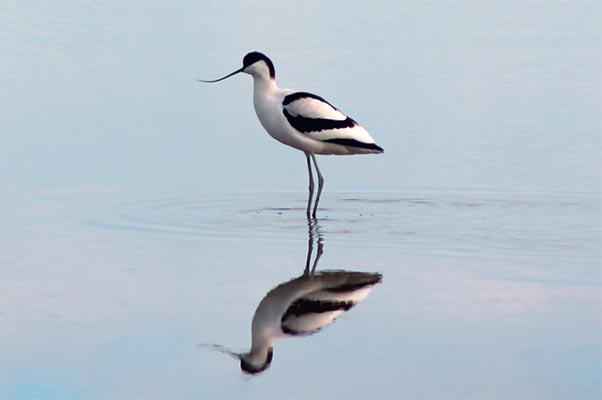
Baird’s Sandpiper
Latin Name
Calidris bairdii
Status
Vagrant
Site And Records Information
Poole Harbour has a good record for attracting rare North American vagrant waders but it certainly took a long time for Baird’s Sandpiper to finally get added to the Poole Harbour list with just one record. As is the case for most wader ‘firsts’ in Poole harbour, Brownsea played host to the only record
1 on 1st – 16th Sept 2017. Just one Poole Harbour record of a juvenile found on the Brownsea Lagoon September 2017. It fed on algae mats and the far shoreline of the lagoon (P.Morton et al.)
Balearic Shearwater
Latin Name
Puffinus mauretanicus
Status
Passage Migrant
Site And Records Information
Very scarce visitor but almost annual with the first definite record of one past Branksome Chine on 3rd September 1997. Luckily this bird and others subsequently have decided to do a few circuits around Poole Bay allowing many people to successfully add them to their Poole harbour lists.
Other records include 1 on 7th September 1998, another on 31st August 1998 and 6 were seen off Branksome Chine and Studland Bay between 3rd Jul and 3rd Nov 2000. 2 others were seen off Branksome Chine on 2nd March 2002 which the earliest spring record for the county.
Like most sea watches in Poole Bay, a decent SSE wind will push Balearic Shearwater closer into Branksome Chine. The most recent record is of 3 west on August 20th 2020
There’s also a record of one inside Poole Harbour on 2nd Oct 1977
Recent Records
Branksome Chine – 1 on 20th August and 2 on 26th August 2015
Studland Bay – 1 on 20th August past Pilots Point and 2 on the 21st August 2015
2017
1 on 3rd Aug 2017 from Ballard Down
1 on 3rd Sep 2017 from Branksome Chine
1+ on 14th Aug and 2 on 16th Aug 2019 from Branksome Chine
3 on 21st Aug 2020 from Branksome Chine
Bar-tailed Godwit
Latin Name
Limosa lapponica
Status
Passage Migrant & Winter Visitor
Site And Records Information
Nowhere near as common as Black-tailed Godwit, but still reliably seen feeding or roosting on the mud off shore road, moving to Brownsea if disturbed by windsurfers or bait diggers. Average totals of 60-100 with birds frequenting the shores of Furzey, Middlebere and Arne through the winter. Obvious passage can be observed out in Poole Bay during April with birds heading back to their breeding grounds. The birds passing in spring are a different race to the birds that winter in the harbour.
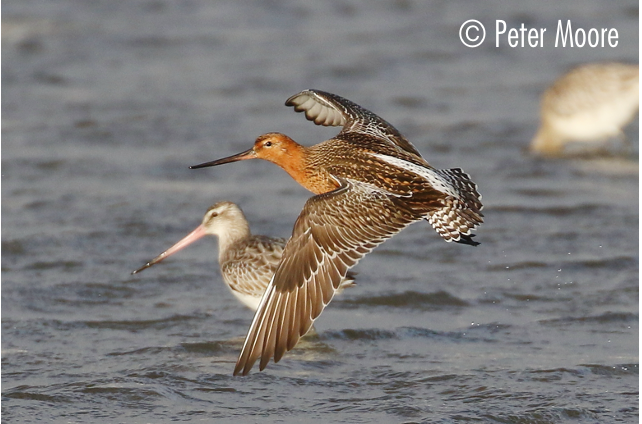
Barn Owl
Latin Name
Tyto alba
Status
Resident
Site And Records Information
Bred recently at Arne and Middlebere, but during severely cold winter birds from further afield can occur anywhere around the harbour in the search for food. Unfortunately it has declined as a breeding species with up to 5 pairs around 10-15 years ago. A bird that was ringed as a chick at Shapwick in 2011 was recently re-seen at Sunnyside farm in the west of the harbour. Now also breeds at Ridge, Worgret, Swineham and Greenlands Farm
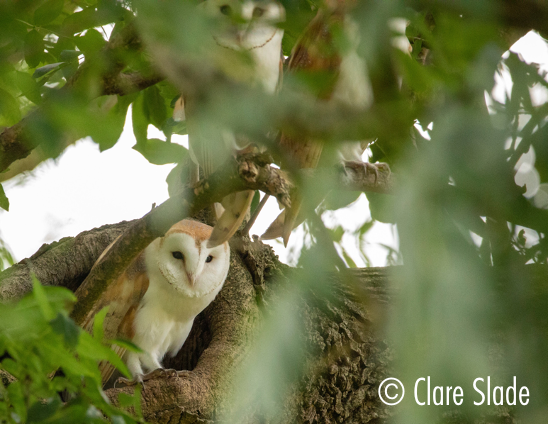
Barnacle Goose
Latin Name
Branta leucopsis
Status
Feral & Winter Visitor
Site And Records Information
Most sightings in the harbour relate to feral individuals that mixed with Canada Geese. A small feral flock was regularly reported in Poole Harbour from 1978 to at least 1986 reaching a maximum of 9 at Poole Park on 12th Jan 1985. In 2014, 2 were with a flock visiting sites in the north of the harbour.
There are recent good examples of birds that were considered to be wild.
In Dec 2010 a very cold spell of snowy weather drew a flock of 42 to Brands Bay on 6th. They remained until 8th before deciding that the fields of Lytchett Bay were a far more attractive proposition. They remained here from 12th Dec until 14th Jan 2011.
In Dec 2011 12 flew through Lytchett Bay on 17th, before 13 were found at Middlebere on the 18th. 4 continued to be seen until 21st Feb 2012 at various sites in the southern harbour. It is likely that remainder of these birds moved on to join the wintering flock at The Fleet which was established at the time.
On 17th Feb 2013 20 flew NE over Lytchett Bay at dusk. It was considered that these were from the wintering flock in the Fleet at the beginning of their return migration.
On April 29th 1 at Swineham and Keysworth and 2 at Lytchett Bay on Aug 22nd, 4th and 11th Oct 2014
On 20th November 2015 25 flew east over Littlesea, Studland
On 6th January 2015 one was in Poole Park
On 22nd November 12 went west over Poole Town, Constitution Hill Road
On 24th November 2016 24 were settled in Lytchett Bay during the morning
On 10th October 2018 10 flew over Sunnyside Farm (B.Whally)
24 on 24th Nov 2016 (seen later same day in Devon) and 22 on 26th Dec 2016 at Lytchett Fields RSPB
22 on 27th Nov 2017 at Swineham GP, also seen on 3rd & 15th Dec 2017
12 on 30th Oct 2017 at Arne RSPB, which later moved to Swineham GPs.
14 near Green Island on 26th January 2017, settling at Rempstone on 27th & 28th Jan 2017. 1 in the Middlebere Channel on 27th Oct 2017.
14 on 1st Jan and 12 on 3rd Jan at Swineham GP. A minimum of 11 on various dates between 30th Jan and 12th Mar 2017, rising to 14 on 7th Feb 2017. 13 birds present on 30th & 31st Oct 2017 at Swineham GPs .
2020
35 flew S from Brownsea Island on 27th May 2020; singles at Middlebere on 18th Aug 2020, Little Sea on 31st Aug 2020 and from a bird boat on 11th Dec 2020
1 on 27th Sep, 21st, 22nd & 28th Nov and 11th, 12th, 15th & 20th Dec 2020 all at Swineham
Singles at Holme Lane, Bog Lane Greenspace on 14th Dec 2020, Lytchett Bay, 27th Sep 2020 and Wareham Common 3rd Jun 2020.
A site record of 50 circled over Lytchett Bay on Jan 10th 2021.
Otther single records from 2021 included 1 off Redhorn on Feb 10th, Ower Bay Feb 16th, Brownsea Lagoon April 1st , Lytchett Bay June 3rd, Swineham GP Nov 15th. There were also 5 in Brands Bay on October 21st.
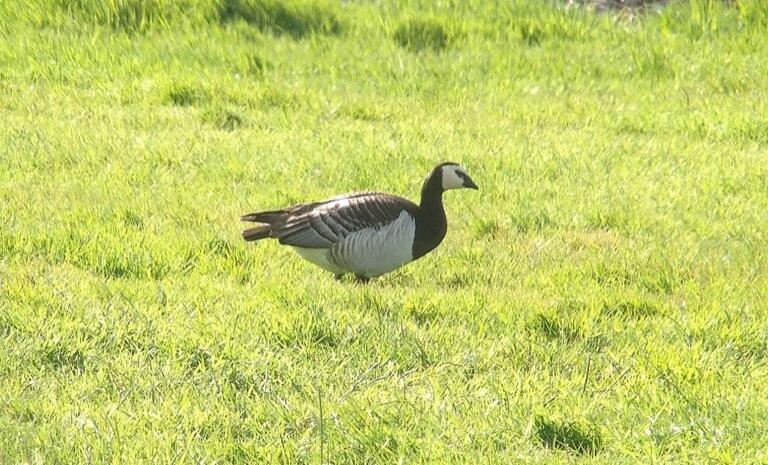
Barred Warbler
Latin Name
Sylvia nisoria
Status
Rare vagrant
Site And Records Information
Studland National Nature Reserve – Two records with sightings on 20th September and 3rd October 1981.
Bean Goose
Latin Name
Anser fabalis
Status
Vagrant
Site And Records Information
This rare goose species only occurs very infrequently and has only occurred in Poole Harbour on six dates, although one of those occurrences was of 14 individuals on Dec 6th 2004 which were confirmed as Tundra Bean Goose. The Frome Valley, Swineham, Bestwall and Arne Moors would be classic places to look during the winter in amongst the Canada and Greylag Goose flocks.
5 “secured for eating” on 24th Nov 1876, site unspecified
1 on 11th Dec 1976 in Poole Park
1 from 31st Dec 1982 to 27th Feb 1983 at Swineham
2 on 30th Jan 1994 at Little Sea, Studland then Keysworth. These birds were confirmed as Tundra Bean Geese (A. f. rossicus).
14 on 6th Dec 2004 at Wareham Meadows (D.Liley et al.). The following day they were seen at Middlebere. These birds were confirmed as Tundra Bean Geese (A. f. rossicus).
2 on 6th – 8th Dec 2014 at Swineham (P.Morton, M.J.Lawson et al.) moving briefly to Arne Moors on 7th. These birds were not assigned to species level.
Dec 20th 2021 and remained into 2022.A family party of 2 adults and 1 juvenile were found in Upton CP. They were confirmed as Tundra Bean Geese (Tom Beer)
Jan 1st – 11th March 2022. The family party that arrived in late 2021 at Upton CP remained until mid-March, touring Poole Harbour, being logged at Lytchett Fields, Swineham, Brands Bay, Keysworth and Bestwall
Bearded Tit
Latin Name
Panurus biarmicus
Status
Resident
Site And Records Information
First colonised the harbour in the mid 70’s. Most regularly recorded from Lytchett Bay and Swineham. Breeding has been confirmed at Lytchett Bay, Holton Heath and Arne. Can be eruptive, “A massive immigration in the second half of October 1972” with a maximum of 44 on 17th at Arne. 20- 25 regularly present thereafter to the end of the year. Migrants have been confirmed with 2 Dutch ringed birds controlled at Arne in 1972. The reed beds along the north edge of lytchett Bay are the most productive, certainly in autumn where flocks of 40+ can occur.
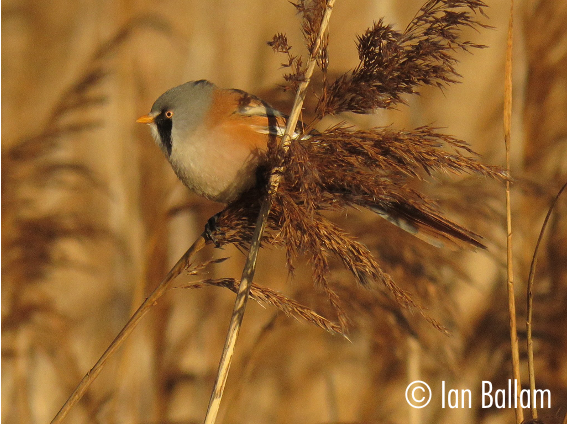
Bee-eater
Latin Name
Merops apiaster
Status
Vagrant
Site And Records Information
Without doubt, Bee-eater is top of every birders target list in spring and is an extreme vagrant to the harbour. Records of this species in Britain are steadily increasing and with breeding taking place on the Isle of Wight in recent years. Hopefully we can look forward to a twitchable bird in the harbour soon. May looks like the best month!
6 on 7th May 1988 at Brands Ford
1 on 9th May 1998 on Ballard Down
3 on 24th May 2009 flew SE over a Broadstone garden (K.E.Lane)
Bewick’s Swan
Latin Name
Cygnus columbianus
Status
Scarce Winter Visitor
Site And Records Information
The fly way population of Bewick’s Swans declined by 27% between 1995 and 2005. The occurrence of the species in southern England has been further effected by mild winters and the species preference to winter in eastern England. Numbers are now very low and appear to depend on the severity of the weather. A wild swan in Poole Harbour is now just as likely to be a Whooper as it is a Bewick’s.
This species used to be regular at Little Sea in the 60’s, since then the water meadows at East Holme has become the most reliable place to see this species with occasional birds wandering to Bestwall at Wareham. A maximum of 40 were seen on 2nd Mar 1980. Whilst 27 were seen flying to roost on the Wareham water meadows with seventeen White-fronted Geese in balmy weather in the evening of Sat 8th Feb 1982. Ringing records showed that most Dorset birds breed in the Pechora Valley in Arctic Russia. They also show how the birds used to move through the Somerset Levels in December then arrive in Dorset early in the year
Records this century:
4 on 13th Feb 2000 at Wareham Water Meadows
4 on 1st Jan 2001 at East Holme
2 on 15th Dec 2002 at East Holme
Up to 14 between 4th Jan and the end Feb 2004 at various sites in the Frome and at Arne
2 from 22nd Jan – 3rd Feb 2006 in the Wareham area
2 on 20th Nov and 1 from 15th Dec 2007 to 2008 at East Holme
1 (the bird above) remained at East Holme until 1st Feb 2008. 1 was then seen at the same site 14th -16th Dec.
4 from 10th – 14th Jan, increasing to 5 on 17th Jan 2010 at East Holme. A single at Middlebere on 10th Jan 2010.
2 on 2nd – 4th Jan 2014 at Wareham Water Meadows.
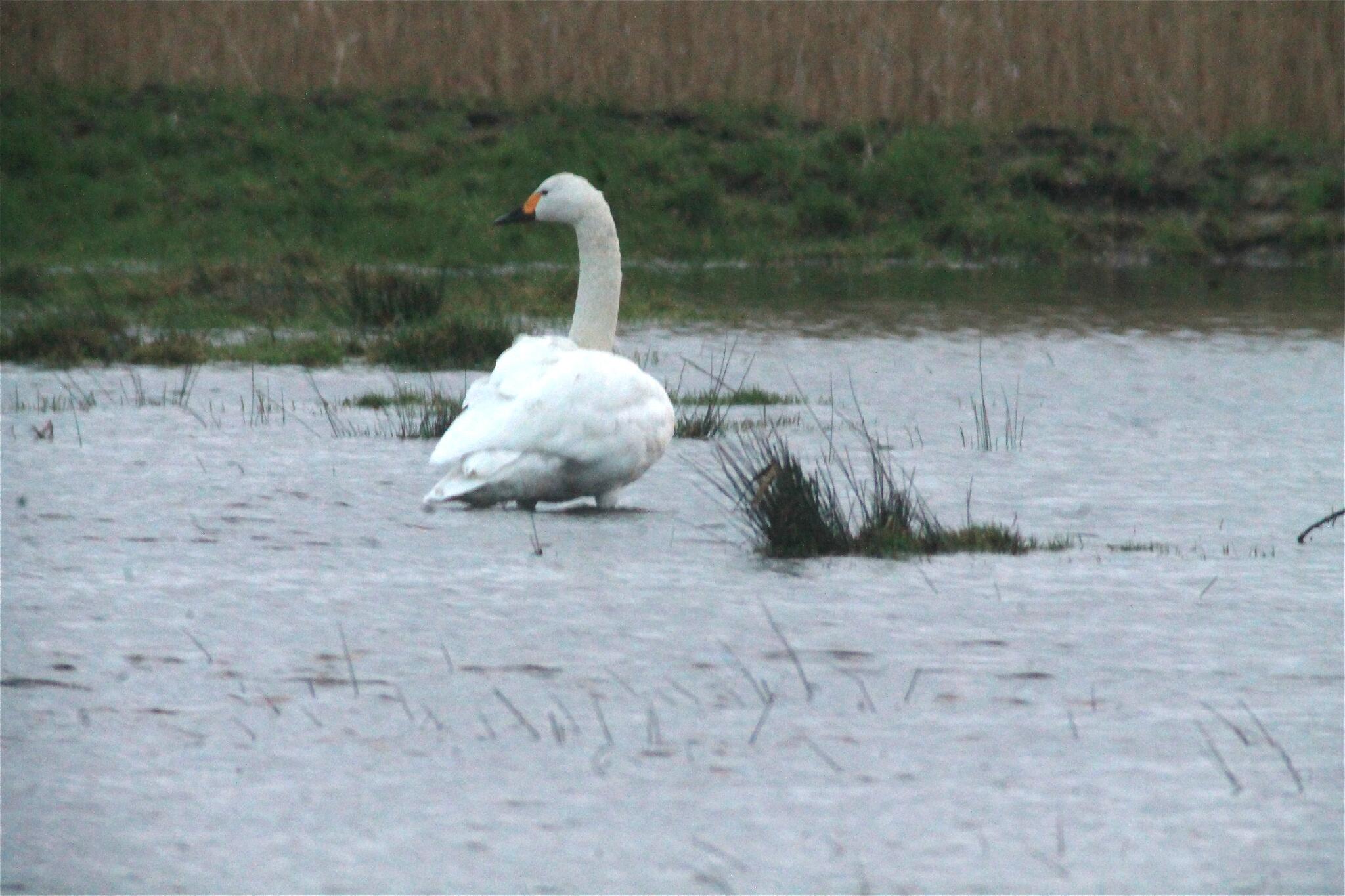
Bittern
Latin Name
Botaurus stellaris
Status
Winter Visitor
Site And Records Information
In 1997, at the start of the EU LIFE Bittern project, only 11 booming males were found in the UK at seven sites. By 2014, there were 140 ‘boomers’ across 61 sites. This has increased again to 150 in 2015. This species is one of Britain’s conservation success stories. The birds visiting Poole Harbour come from far afield. The species does not now breed in Dorset despite having bred historically. The British wintering population is estimated to be c600 with the indigenous population supplemented by migrants from the continent.
Hatch Pond is included in the Poole Harbour recording area and between 1997 and 2013 this species was present every winter. It was relatively easy to see with up to 4 birds regularly over wintering at this very urban site. However for reasons unknown no birds returned in the winter of 2013-14 or 14-15 and to date none have been seen in the winter of 15-16.
Sightings from the rest of the harbour have increased too. Swineham, Middlebere, Arne and Lytchett Bay all have produced records in the last 5 years, whilst its also recently been discovered that by watching reed beds at dusk (especially Swineham) migrant Bittern depart just before sunset, calling to other Bittern in the darkness before lifting up off NE into the darkness. Truly magical. They can often turn up in unusual locations during cold weather with one found in a built up area of Parkstone during the ‘big freeze’ of Jan-Feb 1963. The latest recorded was on 10th May 1946 at Swineham and the earliest was also at Swineham on 21st September 1975.
Recent records
Arne Moors – 1 on 4th Jan and 17th – 18th Feb, 12th – 13th December 2014
Lytchett Bay – 1 13th Jan 2014
Swineham GP – 1 30th Dec 2014
Arne Moors/Swineham area – 3rd, 5th, 7th, 26th January. 9th, 10th February. 25th March. 3rd Nov 2015
Swineham GP – Singles departed at dusk on 7th, 8th and 9th Marsh 2021
Black Brant
Latin Name
Branta bernicla nigricans
Status
Vagrant
Site And Records Information
This longed for for species was added to the harbour list on 10th February 2003. It was found from the hide at Arne overlooking the Middlebere Channel and was almost certainly the same bird seen at Stanpit Marsh late in 2002. This bird was also seen at Ower and Middlebere being last recorded on 14th March 2003. In 2004 what was believed to be the same bird was found by at Middlebere on 10th Jan. It was still there next day but was then relocated at Baiter.
This distinctive race breeds in eastern Siberia and western Canada. They are increasingly found with Brent Geese flocks in Britain. As of 30th June 2005 records of this species were no longer reviewed by BBRC.
1 from 10th Feb – 14th Mar 2003 at Middlebere (J.Lidster, B.Spencer et al)
1 on 10th and 17th Nov 2005 at Studland (J. Lidster)
1 from 5th Feb – 27th Mar 2006 at Middlebere (many observers)
1 from 19th Nov until 21st Feb 2007 at Middlebere (T.Elborn, J.Phillips et al ). This bird was also seen at Wytch and Arne. (Presumed returning adult from above)
1 from 16th Jan – 1st Mar 2009 in Studland area (G.Armstrong et al)
1 on 8th – 15th Jan 2017 off Gold Point and Middlebere (N.Hopper et al)
1 on 20th Dec 2017 in Brands Bay (S.Smith)
1 on 21st Feb 2018 at Whitley Lake, Sandbanks (N.Hopper et al)
1 on 4th Nov 2018 in Wareham Channel (N.Hopper)
1 in on 11th – 13th December in Lytchett Bay (S.Robson et al)
There is one additional undocumented record of 1 on 10th – 14th Jan 2004 at Middlebere. This record was noted as pended in 2004 DBR, we would welcome further details on this report. An individual has also spent the winter periods of 2017-2020 in the with the dark-bellied Brent Goose flock along the southern shores of Poole Harbour, wandering occasionally to Evening Hill and the Wareham Channel.
2017
Poole Harbour Single bird at Middlebere on 8th & 14th Jan; also in Brand’s Bay on 20th Dec and at Middlebere on 24th & 28th Dec (P Moore et al).
2018
Poole Harbour The bird first seen in Dec 2018 was seen intermittently at Arne RSPB, Middlebere, Sandbanks and other locations from 1st Jan to 23rd Feb. During the second winter period, 1 was in the Wareham Channel on 4th Nov (N Hopper et al) and an adult at Lytchett Fields RSPB on 11th Dec was the first record for the site (S Robson).
2019
Poole Harbour In the first winter period a single adult remained from 2018 until 5th Mar. During the second winter period single adults were seen near Round Island on 28th Nov (L Bissell et al) and Lytchett Bay on 17th Dec (S Robson et al).
2020
Poole Harbour In the first winter period a single bird remained from 2019 favouring the south shore between Goathorn and Ower on 19th– 22nd Jan and on 23rd Feb (Phil Saunders et al). During the second winter period, 1 was in Brand’s Bay on 20th Dec (Steve W Smith et al).
2021
Adult at Shipsatl Beach, RSPB Arne, 27th Jan (P Morton & J Parker et al). Presumably the same returning bird was seen later in the year with 1 at RSPB Arne on October 22nd (A Miller & C Batty) and later seen in the Wareham Channel on October 26th (B Maxted & S Robson)
Black Grouse
Latin Name
Tetrao tetrix
Status
Former Breeding Species, No Recent Records
Site And Records Information
Sadly a bird that no longer breeds on the open heaths of Poole Harbour where it was once an uncommon bird almost 150 years ago. They were Shot out in the last century. “Birds were not uncommonly found on the heaths between Studland and Goathorn” – Mr Clifdon
Black Guillemot
Latin Name
Cepphus grylle
Status
Vagrant
Site And Records Information
An increasing winter visitor to the harbour, seen during winter where they often pitch up at favourite feeding sites for days, sometimes weeks at a time. The south-east corner of Brownsea has been a favoured over-wintering site in recent years, with birds leaving the harbour on a falling tide and feeding out in Shell and Studland Bay.
1 on 4th Feb 1933 in “Poole Harbour”
1 on 27th Dec 1999 in Studland Bay (J.F.Phillips, S. Woolley)
1 from 3rd to 25th Oct 2001 at the harbour mouth (many observers)
1 on 19th to 22nd Nov 2010 nr Furzey Island, Brands Bay and Studland Bay (H.G.Wood-Homer et al)
1 from 13th Dec 2014 to 8th Feb 2015 at the harbour mouth (many observers)
1 on 14th – 23rd Dec 2015 off Brownsea (P.Morton et al). Last winters’ returning bird?
1 on 3rd Jan – Feb 18th 2016 off Brownsea SE shoreline
1 on Nov 13th – 15th 2018 off Brownsea southern shore – (G.Armstrong et al)
1 on Aug 11th 2019 taken into care, found off Bournemouth Pier
Black Kite
Latin Name
Milvus migrans
Status
Vagrant
Site And Records Information
There have been 29 accepted records for Dorset up to 2012 but only 4 accepted records in Poole harbour. This species ceased to be classed as a national rarity by BBRC in 2005. Records are now assessed by the DRP.
1 on 12th and 14th Apr 1981 at Corfe Castle (M.Read, E.Read, R.E.Scott, E.A.Scott et al)
1 on 31st Aug 2014 over Slepe Heath, headed SE towards the harbour mouth (P.Morton)
1 on 31st July 2018 over Slepe Heath (P.Hadrill)
1 on July 2nd and 8th 2021 over Greenlands Farm and Keysworth (A.Brown & C.Newman)
Black Redstart
Latin Name
Phoenicurus ochruros
Status
Passage Migrant & Winter Visitor
Site And Records Information
Ballard Down was the premier site with regular sightings in early spring and late autumn. Other favoured sites include the Knoll/Middle Beach area, Arne Farm, Middlebere, Poole Quay, Old Town Poole and Sterte/Holes Bay but they can, and do, turn up almost anywhere during the autumn and winter even on the Sandbanks Crazy Gold Course like in Nov 2018. They can often be spotted out of office windows during October and November on the old roofs of Old Town Poole, brightening up a dull meeting. Breeding was confirmed in 2022 with a pair nesting in Old Town Poole, successfully raising three chicks.
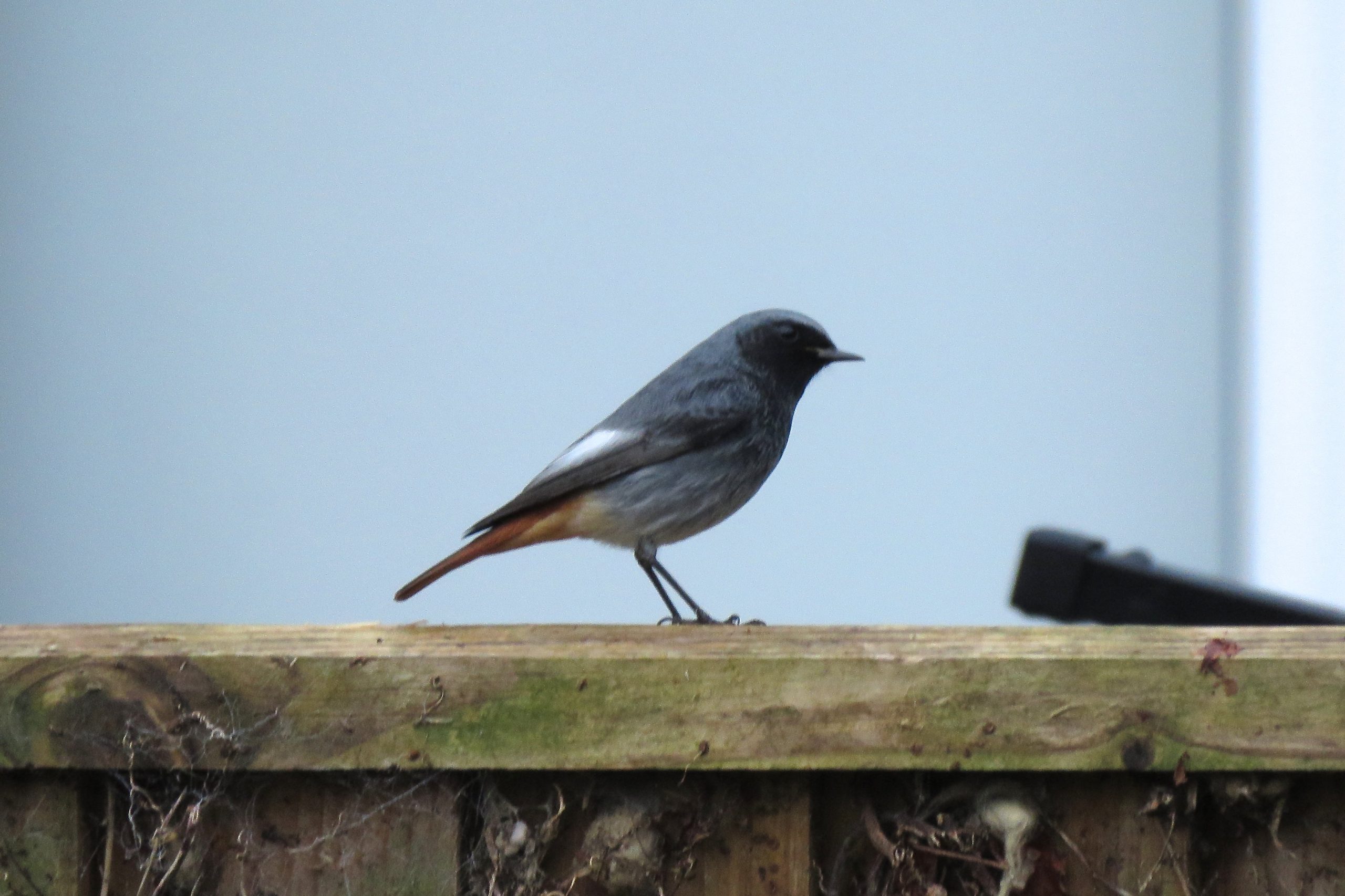
Black Stork
Latin Name
Ciconia nigra
Status
Vagrant
Site And Records Information
Middlebere has 80% of all harbour records for this species, making the ‘NT Harrier Hide’ or Coombe viewpoint at Arne the best place to try and see this rare bird in the harbour.
1 historic report of one shot on 22nd Nov 1839 at Middlebere with another shot there in Nov 1849
1 on 28th May 1977 at Middlebere
1 on 16th Jul 1988 at Arne/Middlebere (A.Gouldstone, C.Kitchen et al)
1 on 1st May 2011 at Lytchett Bay (S.Robson)
1 on 8th – 9th Aug 2015 in Middlebere/Wytch Lake area (many observers)
Black Tern
Latin Name
Chlidonias niger
Status
Scarce Passage Migrant
Site And Records Information
Usually at least one or two records each year mostly in autumn. An average of 4-5 birds per year 2008-2012. However the range was large, from 12 in 2008 to 0 in 2009. Brownsea is a favoured stop off point. More recently Swineham GP has proven attractive. Seawatching from Branksome also offers opportunities in early May. Larger groups can rarely occur with flocks of 10-20 birds in the records at Studland and Holes Bay. An incredible record on the 18th August 1952 saw 1000+ Black Terns arrive in Studland Bay, “these were assembled on the beach at Studland Bay, and at the time consisted of the largest concentration ever recorded in the British Isles”
Black-eared Wheatear
Latin Name
Oenanthe hispanica
Status
Vagrant
Site And Records Information
1 on 25th – 26th Jun 2000 at Upton Heath (many observers). This record of a 1st summer male was accepted as the eastern Mediterranean race O.h.melanoleuca. To some this adjudication remains in dispute and in their minds the case that it was the nominate western race remains open.
There have only been 4 Dorset records of the stunning wheatear. All between 16th May and 26th Jun.
Call 01202 641 003
© 2024 Birds of Poole Harbour Registered Charity No. 1152615

